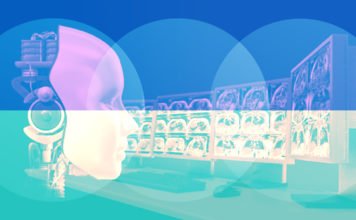

IoT Security Concerns: Consumer vs. Corporate ViewpointsIoT seems to be the fastest growing segment in the tech sector, with consumers and enterprises alike rushing to buy and enjoy the many benefits of connected devices. As is often…
Benson Chan is an innovation catalyst at Strategy of Things, an innovation management consultancy helping businesses innovate and thrive in a hyper-connected world. He has over 20 years of success in bringing leading edge business and technology innovations to market for corporate and start-up companies. His areas of expertise are in networking, cloud, enterprise IT, IoT and innovation management.

The 3 Easiest Ways to Build a Secure IoT DeviceBuilding an Internet of Things (IoT) product that is secure and maintainable both today and into the future takes time and expertise, plus a grasp on where the ecosystem has been…


Many industrial processes are highly automated from start to finish, with limited to no human intervention. IoT solutions operating in industrial environments need to support a range of autonomy requirements. This may entail building intelligence into the edge devices, incorporating control and automation logic in the gateway, or incorporating deep learning capabilities in the system design. In addition, it must be programmable and integrate with legacy or new manufacturing execution systems.
IoT For All NewsletterSign up for our weekly newsletter and exclusive content!


Although IoT and IIoT share common technologies (sensors, cloud platforms, connectivity, and analytics), the similarities end there. This article highlights key differences that product managers and buyers must know when planning industrial IoT solutions.
Interested in joining our team as a contributing writer or sharing content with our rapidly growing audience? Connect with us by clicking the button below and we will be in touch!
Leave this field empty if youre human:

Cellular IoT Explained NB-IoT vs. LTE-M vs. 5G and More
Whats Holding Back the Smart Home from Mass Adoption?
How to Protect Your IoT Product from Hackers


In a high speed continuous production system with sensors monitoring every aspect of the operation, every second matters. Anomalies must be detected, and corrective actions applied in near real time. Any delay in detection, assessment, decision-making, and execution would be costly, in terms of worker safety, product quality, costs and lost revenues. Industrial IoT solutions must similarly be built to support the low latency requirements of some industrial applications.
The 5 Worst Examples of IoT Hacking and Vulnerabilities in Recorded…
As a product manager rolling out your first industrial solution, or a buyer considering a consumer IoT solution for industrial use, its important to understand the differences.
Your Guide to Understanding the Current Component Shortages
Industrial operations require higher levels of precision and accuracy. Automated high volume, high speed manufacturing processes are synchronized to milliseconds. Quality assurance systems detect minute variations and take immediate corrective actions based on those measurements. In this environment, close enough is not good enough, and results in lost efficiency, downtime, and revenues. Industrial IoT solutions must support operations where high precision and accuracy are business as usual.
For example, a consumer and an industrial activity tracker both collect and monitor heart rate information. But the industrial tracker incorporates additional design parameters that its consumer counterpart may not have. The parameters that differentiate IoT from industrial IoT include:
Industrial processes impose onerous requirements on IoT solutions. Product managers must account for these additional requirements in the design and engineering. They must understand the specific use cases, as well as the environments the solutions will be placed into.
IoT For All is a leading technology media property dedicated to providing the highest-quality, unbiased content, resources, and news centered on the Internet of Things and related disciplines.

![]()
How AI and Computer Vision Speed Up Job Automation
How Data Visualization Impacts Your Business Strategy
Industrial IoT solutions must co-exist in an environment with a significant amount of legacy operations technologies (OT), including SCADA, M2M, and other purpose built manufacturing execution systems. These legacy OT systems are not going away. Industrial IoT solutions must integrate, support various protocols and data sets, and work reliably with these manufacturing systems. Equally important, IIoT solutions must integrate with back-office enterprise resource planning (ERP) systems.
Industrial systems must operate reliably and predictably in harsh conditions for years and years. Supporting this level of performance requires regular maintenance from in-house and field service technicians. IoT solutions operating in industrial environments must be serviceable in order to sustain the levels of performance required. From swapping out sensors, updating firmware, to configuring gateways and servers, the ability to maintain industrial IoT solutions over its entire lifecycle is an essential requirement.


.td_module_8 .entry-title font-size: 15 .td_module_8 margin-bottom: 8 bel color: black; .backgroundisgrey background-color: f0f2f2; box-shadow: 2px 2px 2px f0f2f2; .td-post-source-tags display:none;
How Will IIoT Create More Shareholder Value?
Industrial IoT solutions may be subject to the same conditions and requirements. They must be hardened to support high availability, withstand high duty cycles, and operate reliably and within tolerance, day in, day out for years and years, with shutdowns only for maintenance.
Your Guide to Understanding the Current Component Shortages
Mission critical industrial processes and systems, where downtime (or even access for service) is not an option, are designed with resilience in mind. A breakdown in one part of the system will not stop operations. While there may be a loss in operational capability, the tasks are taken up by backup systems, or the processes may be routed to a part of the system with extra capacity.

Harmonize Your Enterprise: A Beach Boys Business Lesson
Industrial networks are specialized large scale networks supporting tens of thousands (or more) of controllers, robots, machinery, and other purpose built applications. IIoT solutions deployed into these networks must scale seamlessly, now and later, to support tens of thousands of new sensors, devices and controllers, as well as existing non-IoT devices. This support includes interoperability, scheduling, workflow integration, data collection, analysis, decision-making, and integration with manufacturing and business execution systems.
FCC 3.5 GHz Rule Overhaul Could Devastate Smaller Carriers and Rural…
Buyers evaluating IoT solutions for industrial applications must ask the hard questions. Todays IIoT solutions are emerging and evolving in a very dynamic market. Vendors offering IIoT solutions may be coming from adjacent markets with solutions that may not be robust enough for all industrial applications.
Harmonize Your Enterprise: A Beach Boys Business Lesson
LiveWorx 2018 Recap, IoT Advances and the Internet of Medical ThingsWhat is LiveWorx? Last month I had the pleasure of presenting at LiveWorx 2018, PTCs annual conference. In the words of the organizer, its the worlds most respected digital transformation conference and…

Functionality is important, but isnt the only determinant of whether an IoT solution is industrial ready or not. There are ten other parameters that must be considered. In reality, IoT and IIoT solutions may incorporate all these parameters, but differ in what is implemented and how.
Choosing the Right Market for AR VR Products
How To Build a Holistic Smart City Architecture
Industrial systems operate in long time scales before replacement twenty to thirty years is not uncommon. They operate in harsh environments, sometimes subject to extreme heat, cold, high vibration, pressure, and dust conditions. They may operate in remote locations, far away from headquarters.


How To Build a Holistic Smart City ArchitectureSmart cities leverage the power of IoT to improve service delivery and optimize city infrastructure. Here, drivers dont need to search for parking spots they receive automatic notifications; waste containers…
By checking this box you agree to theterms and conditions
How AI and Computer Vision Speed Up Job Automation
For Trucks Sake: Steer Your Vehicle Fleet Into The Future With IoTTractor trailers carry more than 70% of the freight tonnage transported throughout the United States, according to American Trucking Associations, taking goods from manufacturing plants to warehouses to retail stores. In some…
Industrial and OT systems, from programmable logic controllers to machining equipment, are frequently reprogrammed and reconfigured to support new processes. This programming is done remotely, on site or in the field. Industrial IoT solutions supporting industrial and manufacturing applications must provide the same flexibility and adaptability to support operations.
Industrial IoT solutions, in mission critical operations, must support fault tolerance, or resilience capabilities in its design. From a loss of sensors to a loss of connectivity, industrial IoT systems and architectures must compensate for in-use failures, and still be able to satisfactorily complete its processes and operations.

The Impact of Artificial Intelligence Widespread Job Losses
The Internet of Things (IoT) enables disruptive transformation across multiple market segments, from consumer, enterprise, agriculture, healthcare, manufacturing, and utilities to government and cities. Industrial IoT (IIoT), a subset of the larger IoT, focuses on the specialized requirements of industrial applications, such as manufacturing, oil and gas, and utilities.
IIoT solutions employ a variety of advanced security measures, from secure and resilient system architectures, specialized chipsets, encryption and authentication, threat detection, to management processes.

Product managers must account for these additional requirements in the design and engineering.
While many people assume functionality distinguishes IoT from IIoT, the reality is not that simple. A consumer IoT device may have the same functionality as an IIoT device, and still not be considered an industrial product.
The Impact of Artificial Intelligence Widespread Job Losses
Write CSS OR LESS and hit save. CTRL + SPACE for auto-complete.

![]()
By checking this box you agree to ourTerms and Conditions
Security is critical for all IoT solutions, but industrial IoT solutions require more robust measures. A disruption of a high volume manufacturing process results in lost production costing millions of dollars per day. A takedown of the electrical grid affects economic activity for millions of people and jeopardizes national security.
Customer Centric IIoT Projects are the Key to Success
The 3 Easiest Ways to Build a Secure IoT Device

The Really Hard Thing About GPS and IoT
